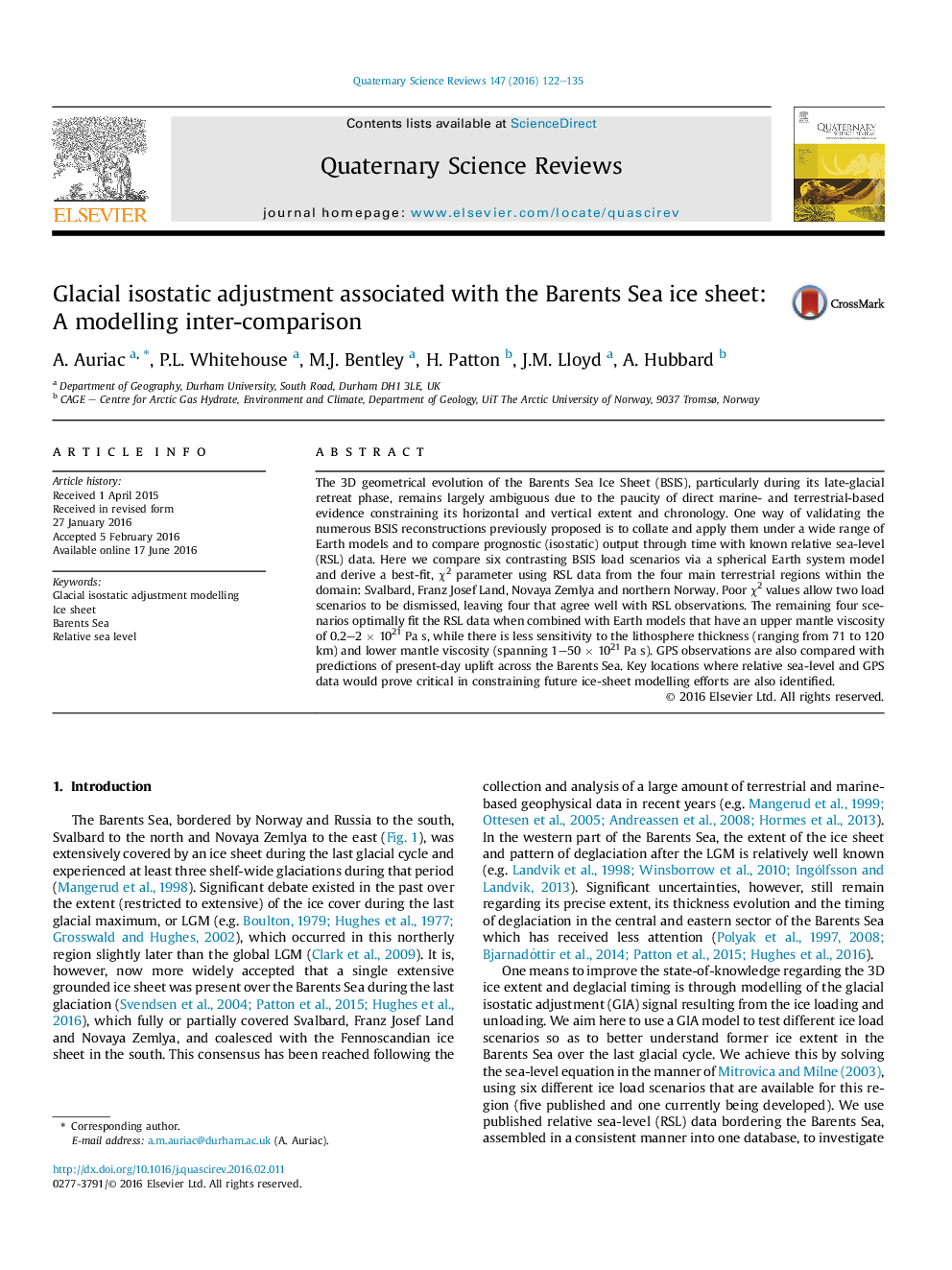| Article ID | Journal | Published Year | Pages | File Type |
|---|---|---|---|---|
| 6446447 | Quaternary Science Reviews | 2016 | 14 Pages |
Abstract
The 3D geometrical evolution of the Barents Sea Ice Sheet (BSIS), particularly during its late-glacial retreat phase, remains largely ambiguous due to the paucity of direct marine- and terrestrial-based evidence constraining its horizontal and vertical extent and chronology. One way of validating the numerous BSIS reconstructions previously proposed is to collate and apply them under a wide range of Earth models and to compare prognostic (isostatic) output through time with known relative sea-level (RSL) data. Here we compare six contrasting BSIS load scenarios via a spherical Earth system model and derive a best-fit, Ï2 parameter using RSL data from the four main terrestrial regions within the domain: Svalbard, Franz Josef Land, Novaya Zemlya and northern Norway. Poor Ï2 values allow two load scenarios to be dismissed, leaving four that agree well with RSL observations. The remaining four scenarios optimally fit the RSL data when combined with Earth models that have an upper mantle viscosity of 0.2-2Â ÃÂ 1021 Pa s, while there is less sensitivity to the lithosphere thickness (ranging from 71 to 120 km) and lower mantle viscosity (spanning 1-50Â ÃÂ 1021 Pa s). GPS observations are also compared with predictions of present-day uplift across the Barents Sea. Key locations where relative sea-level and GPS data would prove critical in constraining future ice-sheet modelling efforts are also identified.
Related Topics
Physical Sciences and Engineering
Earth and Planetary Sciences
Geology
Authors
A. Auriac, P.L. Whitehouse, M.J. Bentley, H. Patton, J.M. Lloyd, A. Hubbard,
